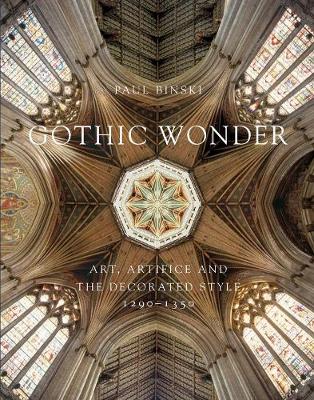Studies in British Art
2 total works
In this beautifully illustrated study, Paul Binski offers a new account of sculpture in England and northwestern Europe between c. 1000 and 1500, examining Romanesque and Gothic art as a form of persuasion. Binski applies rhetorical analysis to a wide variety of stone and wood sculpture from such places as Wells, Westminster, Compostela, Reims, Chartres, and Naumberg. He argues that medieval sculpture not only conveyed information but also created experiences for the subjects who formed its audience. Without rejecting the intellectual ambitions of Gothic art, Binski suggests that surface effects, ornament, color, variety, and discord served a variety of purposes. In a critique of recent affective and materialist accounts of sculpture and allied arts, he proposes that all materials are shaped by human intentionality and artifice, and have a “poetic.” Exploring the imagery of growth, change, and decay, as well as the powers of fear and pleasure, Binski allows us to use the language and ideas of the Middle Ages in the close reading of artifacts.
Published in association with the Paul Mellon Centre for Studies in British Art
Published in association with the Paul Mellon Centre for Studies in British Art
In this wide-ranging, eloquent book, Paul Binski sheds new light on one of the greatest periods of English art and architecture, offering ground-breaking arguments about the role of invention and the powers of Gothic art. His richly documented study locates what became known as the Decorated Style within patterns of commissioning, designing, and imagining whose origins lay in pre-Gothic art. By examining notions of what was extraordinary, re-evaluating medieval ideas of authorship, and restoring economic considerations to the debate, Binski sets English visual art of the early 14th century in a broad European context and also within the aesthetic discourses of the medieval period. The author, stressing the continuum between art and architecture, challenges understandings about agency, modernity, hierarchy, and marginality. His book makes a powerful case for the restoration of the category of the aesthetic to the understanding of medieval art. Generously illustrated with hundreds of images, Gothic Wonder traces the impact of English art in Continental Europe, ending with the Black Death and the literary uses of the architectural in works by Geoffrey Chaucer and other writers.

